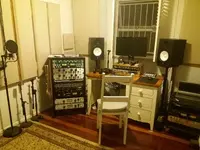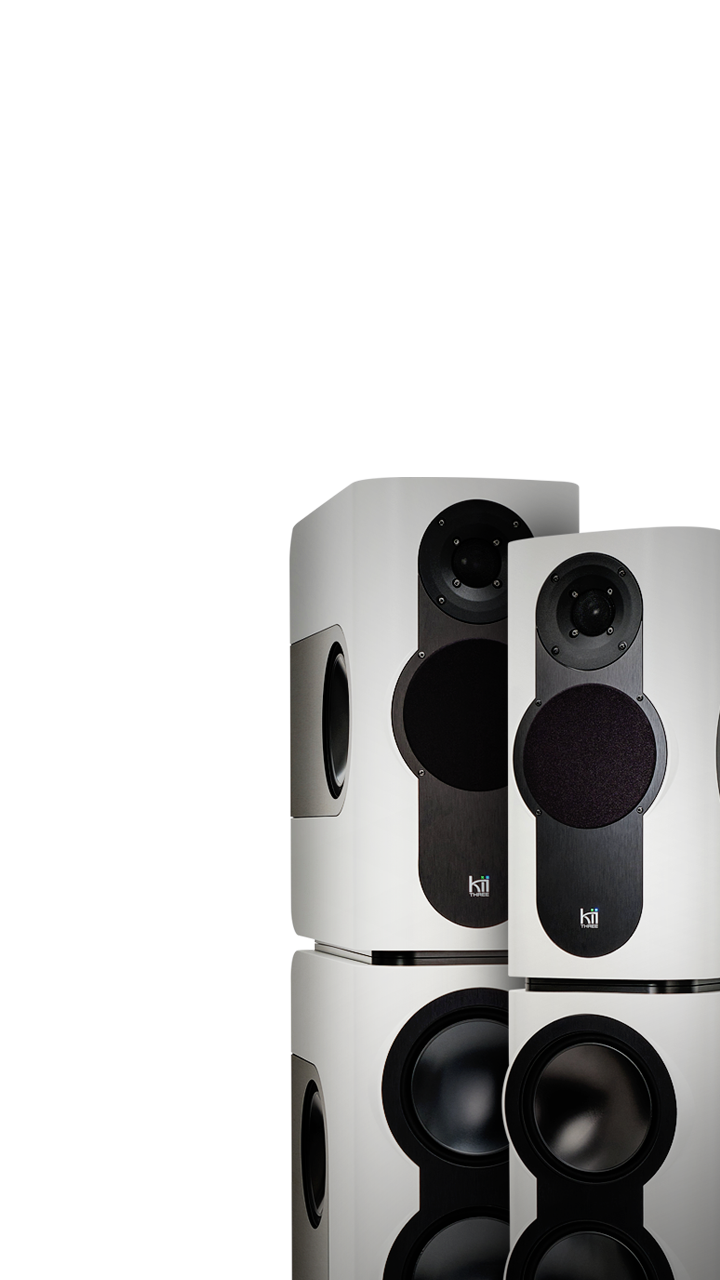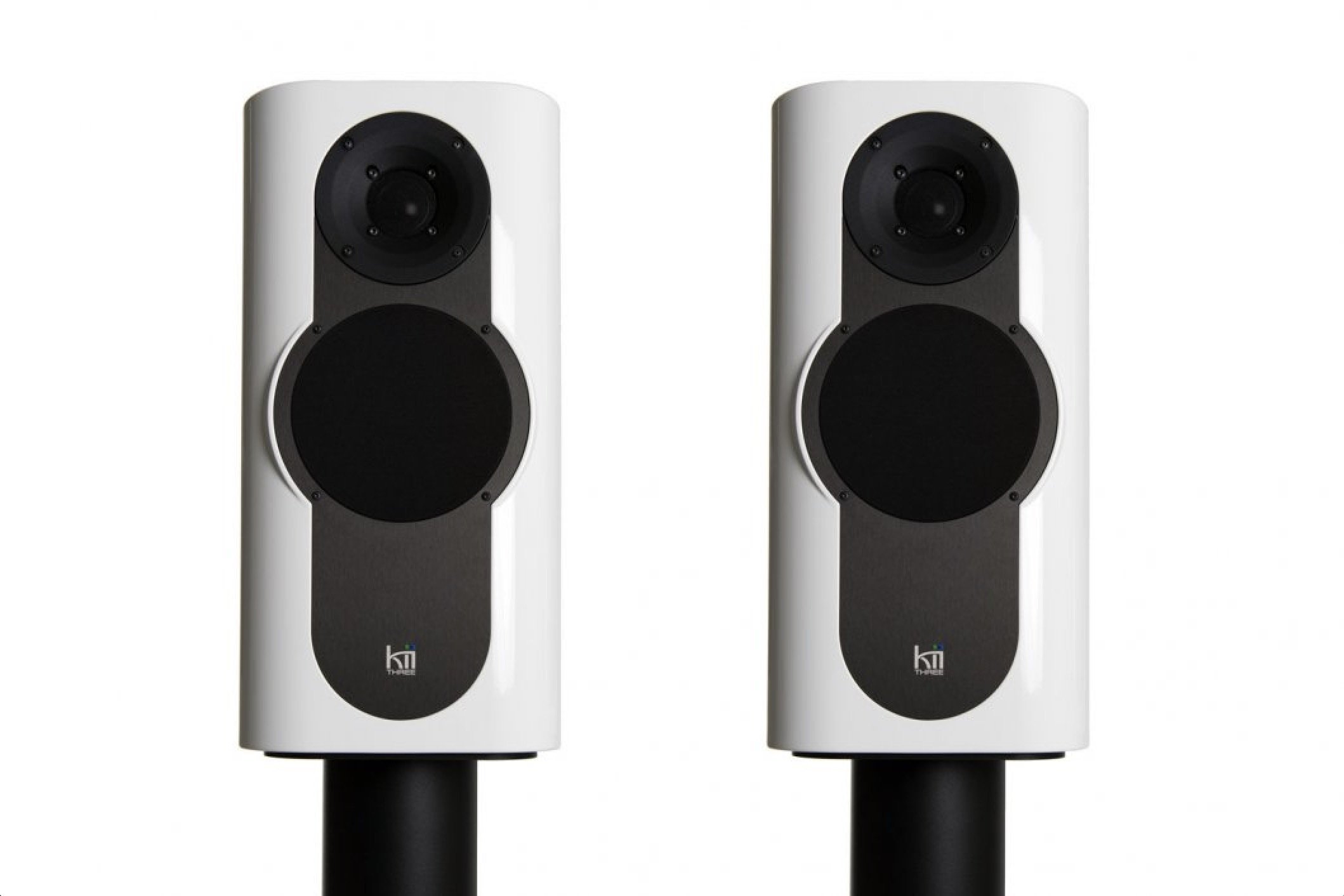Monkey Allen
Fork and spoon operator
Before I go into my problem I should outline my setup:
(Please skip to the questions under the BOLD font below, if you'd rather not read all the following boring crap)
1. Home recording in small spare bedroom maybe 5m x 4m or so (16ft x 13ft). Wooden floors with a rug on a third of it. Prime Acoustic London 10 system on walls...corners and reflection points...plus DIY deep treatment in front corners, a foot and a half square in both corners floor to almost ceiling. No ceiling traps. Monitors placed well off back wall...basically everything as good as I can get it for that room and with the treatment I have.
2. Yamaha HS8 monitors, a large variety of headphones including Sennheiser HD600, HD280, Beyer DT880, 770, Sony MDR 7506, Audio Technica ATH M50, ATH M70x
3. Lots of great gear...Neumann u87ai, AEA N22 ribbon, RME Fireface UFX II, Daking Fet 3, Daking Mic/pre/eq, UA LA610mkii, Grace m101, Heritage HA73EQ Elite, Studio One...etc...lots of great stuff.
4. What I most often record (all in that room): Vocals, acoustic guitar, shakers, tambourine etc, glockenspiel, electric guitar usually with Amplitube (I simply can not crank my amp), organs and keys with a midi keyboard, drums are Ezdrummer or Addictive Drums. Bass is recorded DI...usually through the LA 610mkii.
5. The type of stuff I do I can link at the end of this post if anyone wants to get an idea.
So that's what I've got and what I'm doing. My issue is with mixing and I'll break down some of my main and observations and problematic challenges I just can't solve...these are in no particular order...I'll just rattle off what I notice...
1. I can get mixes to sound pretty good on basically any of my headphones (main ones are the HD600's - and it is pretty easy for me to make stuff sound agreeable in those). I can also get my mixes to sound good on my Yamaha HS8's in my studio room. However (and no prizes for guessing where I'm going here) if I play my stuff out in my living room (standard living room) where I have some 5 inch M-Audio speakers hooked up to a laptop, I notice particularly that my bass is washy sounding and boomy and ill-defined compared to pro records where the bass sounds tight and has no woolly, boomy, washy bass response. The pro songs have a bass (guitar and general overall bass frequency) that is tight and highly defined. It is deep and resonant and rich...but never boomy, washy or woolly.
2. I'm very often way too scared to listen to my stuff through bluetooth headphones like Samsung ear buds etc (because it's often a bloodbath)...but when I do, all that was washy and woolly and boomy in the bass now seems kind of thin and weak...in addition, the high frequencies are somewhat exaggerated and shrill and spikey. Now, I do think that bluetooth buds are a pretty bad way to listen to music...because I have noticed that some pro songs suffer and can also sound a bit shrill...but not as bad as my stuff, of course.
3. Generally, I notice that pro stuff sounds rich and warm and clear and tight in the low end...compared to mine that is boomy and ill-defined. The pro stuff sounds sweet and musical and pleasant in the high end whereas my stuff can sound annoying and shrill and tinny in the high end.
So, anyway, those are some of the main things...I just don't get how this delicate balancing act is achieved in pro stuff. They seem to be able to make the low end full, deep, tight low and rich...but never boomy, ill-defined and washy...and they seem to nail the high end where everything is sweet and never shrill.
What they achieve (and what makes stuff nice to listen to)....I excel at achieving the direct opposite.
And the kicker is that my stuff sounds good on my HD600s and Yamahas...and so does the pro stuff....but my stuff goes downhill on any other playback medium whereas the pro stuff still sounds essentially the same.
I've been mixing here and there for years...and only in the last year and a half regularly. I know there's a lot of advice that could be thrown my way...it's your room, it's you, it's your ears, it's your musical ability, it's your room treatment, you need to use aural exciters more (or less), you need to accentuate the harmonics, you need to use MaxBass, you need to know your room, you need way better room treatment...etc etc. I appreciate all this, really. I get it.
But there's people on youtube (and I don't mean to sound that I'm complaining or whatever) who record and mix in spaces a lot worse than mine...and their stuff sounds...great.
As far as the bass goes...I dunno...because I go DI maybe I'm capturing far too much low end...I usually roll off bass guitar around 40hz or so. Maybe I need to be cutting much, much more low end than that and getting it to resonate more around 100/ 200hz. I just dunno. I know that Motown stuff was often DI bass...but after that I dunno how they treated it.
So anyway, that's my recording/ mixing SOS. What basic things can I do to tread that delicate line of judgement where I manage to get a more tight, rich low end that's not boomy, and a sweet, pleasant high end that's not shrill?
Thanks for any advice.
Skip to these questions if you don't want to read the above boring blog:
1. How to get Fender P Bass D.I recording to sound tight, rich and full but not washy, boomy and ill-defined.
2. How to get tracks sounding sweet and pleasant in the high frequencies without making them shrill and annoying.
Here's a link to my stuff:
I'd suggest that the best/ most successful mix I have ever done was the song called Better Me Better You...and the worst mix on that link (of recent times) is the song Fool Up...but they are all pretty amateur.
It's kind of a holy grail in this life for me to create the best sounding recordings of my songs, for what they are worth, that I can. It's really frustrating. Any practical advice, based on what you can go on from my info here, is much appreciated.
Thanks
(Please skip to the questions under the BOLD font below, if you'd rather not read all the following boring crap)
1. Home recording in small spare bedroom maybe 5m x 4m or so (16ft x 13ft). Wooden floors with a rug on a third of it. Prime Acoustic London 10 system on walls...corners and reflection points...plus DIY deep treatment in front corners, a foot and a half square in both corners floor to almost ceiling. No ceiling traps. Monitors placed well off back wall...basically everything as good as I can get it for that room and with the treatment I have.
2. Yamaha HS8 monitors, a large variety of headphones including Sennheiser HD600, HD280, Beyer DT880, 770, Sony MDR 7506, Audio Technica ATH M50, ATH M70x
3. Lots of great gear...Neumann u87ai, AEA N22 ribbon, RME Fireface UFX II, Daking Fet 3, Daking Mic/pre/eq, UA LA610mkii, Grace m101, Heritage HA73EQ Elite, Studio One...etc...lots of great stuff.
4. What I most often record (all in that room): Vocals, acoustic guitar, shakers, tambourine etc, glockenspiel, electric guitar usually with Amplitube (I simply can not crank my amp), organs and keys with a midi keyboard, drums are Ezdrummer or Addictive Drums. Bass is recorded DI...usually through the LA 610mkii.
5. The type of stuff I do I can link at the end of this post if anyone wants to get an idea.
So that's what I've got and what I'm doing. My issue is with mixing and I'll break down some of my main and observations and problematic challenges I just can't solve...these are in no particular order...I'll just rattle off what I notice...
1. I can get mixes to sound pretty good on basically any of my headphones (main ones are the HD600's - and it is pretty easy for me to make stuff sound agreeable in those). I can also get my mixes to sound good on my Yamaha HS8's in my studio room. However (and no prizes for guessing where I'm going here) if I play my stuff out in my living room (standard living room) where I have some 5 inch M-Audio speakers hooked up to a laptop, I notice particularly that my bass is washy sounding and boomy and ill-defined compared to pro records where the bass sounds tight and has no woolly, boomy, washy bass response. The pro songs have a bass (guitar and general overall bass frequency) that is tight and highly defined. It is deep and resonant and rich...but never boomy, washy or woolly.
2. I'm very often way too scared to listen to my stuff through bluetooth headphones like Samsung ear buds etc (because it's often a bloodbath)...but when I do, all that was washy and woolly and boomy in the bass now seems kind of thin and weak...in addition, the high frequencies are somewhat exaggerated and shrill and spikey. Now, I do think that bluetooth buds are a pretty bad way to listen to music...because I have noticed that some pro songs suffer and can also sound a bit shrill...but not as bad as my stuff, of course.
3. Generally, I notice that pro stuff sounds rich and warm and clear and tight in the low end...compared to mine that is boomy and ill-defined. The pro stuff sounds sweet and musical and pleasant in the high end whereas my stuff can sound annoying and shrill and tinny in the high end.
So, anyway, those are some of the main things...I just don't get how this delicate balancing act is achieved in pro stuff. They seem to be able to make the low end full, deep, tight low and rich...but never boomy, ill-defined and washy...and they seem to nail the high end where everything is sweet and never shrill.
What they achieve (and what makes stuff nice to listen to)....I excel at achieving the direct opposite.
And the kicker is that my stuff sounds good on my HD600s and Yamahas...and so does the pro stuff....but my stuff goes downhill on any other playback medium whereas the pro stuff still sounds essentially the same.
I've been mixing here and there for years...and only in the last year and a half regularly. I know there's a lot of advice that could be thrown my way...it's your room, it's you, it's your ears, it's your musical ability, it's your room treatment, you need to use aural exciters more (or less), you need to accentuate the harmonics, you need to use MaxBass, you need to know your room, you need way better room treatment...etc etc. I appreciate all this, really. I get it.
But there's people on youtube (and I don't mean to sound that I'm complaining or whatever) who record and mix in spaces a lot worse than mine...and their stuff sounds...great.
As far as the bass goes...I dunno...because I go DI maybe I'm capturing far too much low end...I usually roll off bass guitar around 40hz or so. Maybe I need to be cutting much, much more low end than that and getting it to resonate more around 100/ 200hz. I just dunno. I know that Motown stuff was often DI bass...but after that I dunno how they treated it.
So anyway, that's my recording/ mixing SOS. What basic things can I do to tread that delicate line of judgement where I manage to get a more tight, rich low end that's not boomy, and a sweet, pleasant high end that's not shrill?
Thanks for any advice.
Skip to these questions if you don't want to read the above boring blog:
1. How to get Fender P Bass D.I recording to sound tight, rich and full but not washy, boomy and ill-defined.
2. How to get tracks sounding sweet and pleasant in the high frequencies without making them shrill and annoying.
Here's a link to my stuff:
I'd suggest that the best/ most successful mix I have ever done was the song called Better Me Better You...and the worst mix on that link (of recent times) is the song Fool Up...but they are all pretty amateur.
It's kind of a holy grail in this life for me to create the best sounding recordings of my songs, for what they are worth, that I can. It's really frustrating. Any practical advice, based on what you can go on from my info here, is much appreciated.
Thanks
Last edited:




